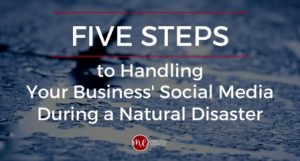— December 4, 2018
Most of the recommendations for improving Marketing and Sales alignment revolve around how these two organizations need to work together. Misalignment is often attributed to a variety of factors, such as different goals, different timelines, and different psychologies. Market dynamics such as commoditization, the Internet, mobility and virtualization, and changing business models only compound the problem.
Trying to tighten the alignment of marketing program activities within the sales cycle, improving coordination around lead generation, creating service level agreements, and increasing Salesforce participation in the Marketing process are approaches many organizations take to improve alignment of the functions. Regardless of various approaches taken by companies to address this issue, the lack of alignment and collaboration between Marketing and Sales persists.
While no one can offer any guarantees, aligning Marketing and Sales makes good business sense and ultimately has an impact on the bottom line. The alignment of those two organizations determines how well a company attracts buyers and sells to them. The relationship is more than just a simple hand-off at the point a lead is generated; it is the foundation for profitable revenue growth.
The conversation about aligning Sales and Marketing is most often around lead management. But Sales and Marketing need to be aligned in at least these four areas:
- Market and customer segmentation
- Go-to-market strategy, process, and planning
- Customer engagement
- Opportunity management
One of the most critical enablement and alignment tools is the Marketing AND Sales playbook.

Marketing and Sales should work from the same playbook
What is a Marketing and Sales Playbook
A Marketing and Sales playbook is a collection of tactics or methods that characterize the roles and responsibilities for both functions. The operative word here is “AND”. The playbook lays out clear objectives, identifies metrics for measurement, and provides a common framework and approach for finding and acquiring customers that is deployed and used by both organizations.
The playbook helps you implement a common marketing and selling methodology that leverages the processes used by high performers. The outcome? You can more effectively anticipate and address different selling scenarios, position against a particular competitor, or communicate the value proposition to each person in the buying process.
What Makes A Good Playbook
In the sports world, a “play” is an action designed to achieve a specific purpose in specific conditions. When you design a playbook you need to define the conditions.
A good playbook should:
- Define your internal Marketing and Sales customer engagement and opportunity management process
- Identify how your process maps to your customer’s buying process
- Tell you how to engage with a prospective customer
- Diagram the engagement experience
- Accelerate sales effectiveness and accuracy
At a minimum, the following knowledge needs to be integrated into the playbook:
1. Customer analysis
Identifies the market, key trends, key buyers and influencers, a profile of the ideal customer, the customers’ pain points and preferences, and the critical business issues customers are trying to solve.
2. Buying process
Identifies conditions or events that trigger consideration, evaluation, and purchase. What are the behaviors of a qualified lead?
3. Company offer and value proposition
Describes and clarifies what your company offers and the ways in which your products and services address the customer’s pain points and business issues.
This is the place to explain why your company exists and how your company makes a difference to the customer and in the market.
This section of the playbook is not complete until it clearly answers two questions. First, “Why should people buy this product from you?” Second, “What is the value they receive buying this product from you?” Part of this section should be dedicated to giving examples of questions that draw out the customer’s business needs and pain points. This section is also a good place to include use case scenarios.
4. Competitive analysis
Details how competitors position themselves in the market and what their selling process is, as well as typical moves by each competitor and recommendations on how to counter these moves.
5. Selling methodology
Maps your selling methodology to the customer buying process.
While this section should outline the stages your customers move through as they investigate, evaluate and select solutions, it should go beyond just describing the steps in the sales cycle. It should provide instructions on what content and touch points are needed at each stage in the process, identify the players in each step, and how to assess the opportunity.
The opportunity assessment information should recommend standard methods and tools that help determine where customers are in the buying process, enable them to analyze the situation, and anticipate what they might do next. This section of the playbook should also provide the guidelines for entering and exiting opportunities and a list of the resources, skills, knowledge, and tools needed for each stage in the process.
6. Countering objections
Gives specific instruction on how to address each common objection sales might encounter. This section should include a message map for each primary competitor. Create a visual representation of all your compelling and relevant messages to ensure consistency.
7. Best practices
Lists proven tips, techniques — and under what circumstances to use them. This section should also capture what hasn’t worked in the past and associated lessons learned.
8. Your buyer roles, profiles and personas
A section that provides insights into the influencers, recommenders, and decision makers and their associated roles, profiles, and personas.

Make the investment in a joint Marketing and Sales playbook
Why Invest in a Playbook
While developing a Marketing and Sales playbook is an extensive investment of your time, it has a big payoff in that it surfaces customer pains and preferences, improves selling effectiveness and productivity, and exposes and corrects weaknesses in the way you currently operate.
When completed, your playbook becomes a living document of your SELLING methodology and provides tactical guidelines and instructions that enable you to discover important ways to address the vulnerabilities of both your company and competitors.
With a practical playbook, you can leverage strengths, differentiate offers, prove business value, and ultimately improve your win/loss ratio. More importantly, a SELLING playbook serves as a powerful alignment tool for the Marketing and Sales functions with everyone operating from the same page.
Business & Finance Articles on Business 2 Community
(51)
Report Post






